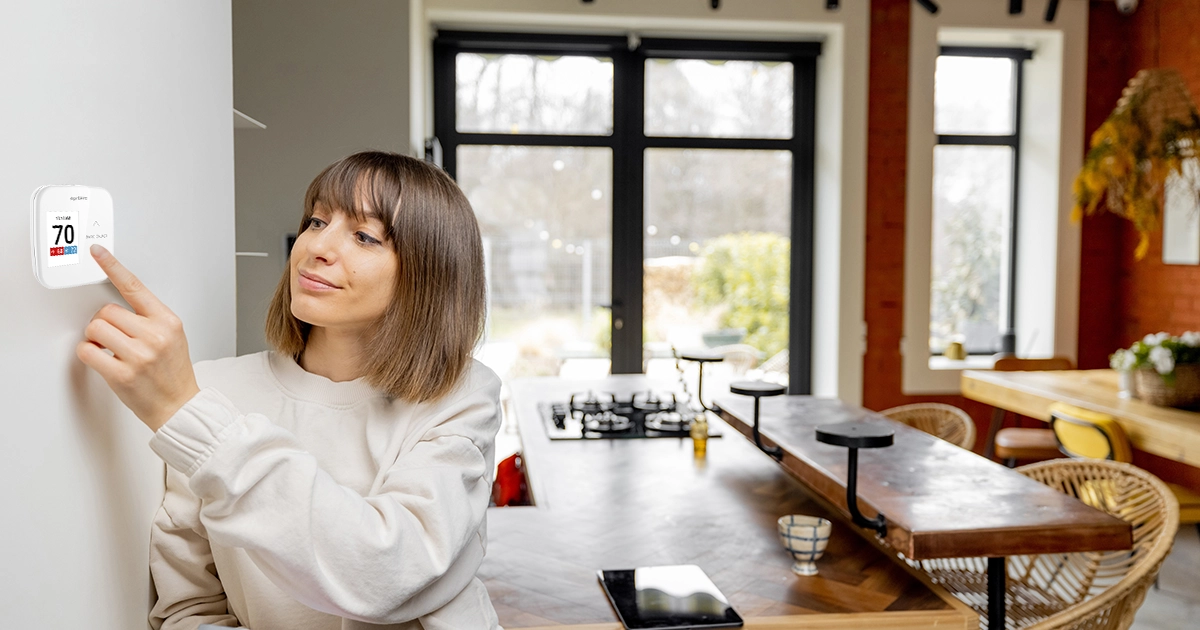Money Savings Tips: Save on Energy and More Winter Tips for Homeowners
3 minute read
As temperatures trend downward and we head into the winter season, it’s not only time to start feeling the holiday cheer, but time to look into easy and simple money savings tips, too. The gifting season can be stressful, with so many people to buy for, and so can entertaining as your home becomes a hub for family and friends alike.
‘Tis the season for savings, and luckily, there are several money savings tips to help you shop smart, save on energy, and more this season. Check out these winter tips for homeowners and get saving!
Money Savings Tips: Save on Energy During the Holidays
Choose Cold Cycles for Holiday Sweaters
You’d be surprised that many garment care labels on your winter sweaters recommend a cold wash cycle—and the same can be true for many different outfits in your closet. Not only can washing with cold water prevent color fading and make clothes last longer (no new wardrobe = money savings!), but it can also help you save on energy and lower utility bills.
In fact, it’s estimated that around 90% of a washing machine’s energy usage goes toward heating up the water for a cycle. While using a hot cycle is still recommended when it comes time to sanitize clothes, sheets, and towels, a warm or cold cycle when warranted can help you save on energy.
Dim Your Utility Bills With Energy-Efficient Lighting
Though the holiday season typically calls for a neighborhood-wide light display and low sunlight hours have you turning on more lights than usual, you can save on energy by shopping for the right lighting options.
Using LEDs inside your home not only helps your light-powered products last longer, but they also use at least 75% less energy than your standard incandescent bulbs! For outdoor lighting needs, motion sensor fixtures or displays with automatic timer options are safe, convenient solutions that can help you avoid always-on lights that make it almost impossible to save on energy.
Don’t Let Whole-House Cooking Cause Whole-House Energy Spikes
During the season of entertaining, it seems like we’re always prepared to cook some delicious holiday meals, but all that time in the kitchen doesn’t mean you can’t save on energy!
If you’re looking for money savings tips that also promote energy savings, employ your smallest appliance to cook your meal. Slow cookers, microwaves, air fryers, and toasters are great substitutes for ovens and stovetops. Just because they use less energy doesn’t mean you have to sacrifice taste!
Winter tip for homeowners: Need a gift for your holiday wish list? Refrigerator models 15 years or older can use up to twice the amount of energy as a new fridge. This season, do your kitchen and home a favor by asking for a new refrigerator to help you save on energy.
Lower Your Water Heater’s Base Temperature
Many water heaters, by default, are set to 140°F to prevent bacteria development and mineral buildup in your water system, but these high temperatures can also increase your risk of scalding burns and unnecessarily high utility bills.
To save on energy, the U.S. Department of Energy recommends setting your water heater to 120°F. Not only is this a great way to save on energy, but it’s a top money savings tip—keeping your water in a safe temperature zone while also saving you up to $400 annually.
Take Your Thermostat Down a Notch
When the weather outside is frightful, adding an extra layer of clothing can help make your indoor environment feel more delightful (and help you save on energy) this season. In fact, the U.S. Department of Energy notes that turning your thermostat down 7°–10°F can save you about 10% a year on heating!
Bonus money savings tip: Using an AprilAire Wi-Fi Programmable Thermostat can help you maintain a consistent heating schedule and help you save on energy by lowering temperatures while away or asleep.
For even more savings, discover the benefits of humidity control!
Control Humidity for Endless Benefits
While lowering the temperature on your thermostat can help save on energy, it can also impact how warm, cozy, and comfortable you feel inside your home. Not with humidity control—just a 4% bump in humidity from your AprilAire Whole-House Humidifier can make your environment feel 1°F warmer!
Because moist air holds heat better, balanced humidity makes all the difference by ensuring you feel warm despite lower temperatures. So, by maintaining balanced humidity year-round—between 40–60%*—you can save on energy, improve your health, and endlessly reap all the benefits with this easy money savings tip.
Gift the gift everyone wants this year: Ask a local AprilAire Healthy Air Professional how an AprilAire Whole-House Humidifier can help you feel more comfortable, stay protected against viruses and illness, help you save on energy, and so much more.
*While balanced humidity exists between 40 and 60%, it’s important to remember that outdoor temperature and other home factors will impact what relative humidity level is attainable and recommended for your house. Talk with your AprilAire Healthy Air Professional to learn more.

